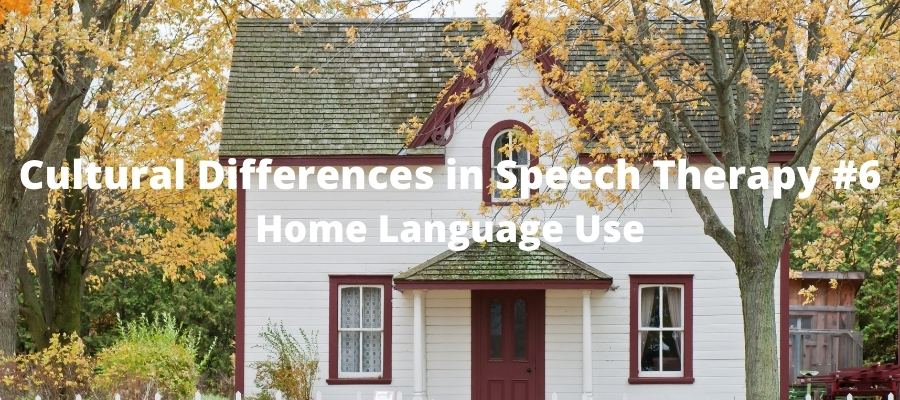Home Language Use is part of a 10-essay series. New? Start here: Cultural Differences in Speech Therapy and Assessment
What is Home Language Use as it Relates to Culture?
Home Language Use involves the influence pragmatics of a language have on interpersonal communication. One principle factor affecting communication is the degree to which context is necessary to derive meaning. The amount of information conveyed through setting or context differs among cultures, ranging from high to low context. For example, in high-context cultures, context is crucial to communicate meaning. In interacting with these cultures, a culturally competent clinician would be especially aware of nonverbal aspects of communication, such as eye contact, gestures, space, use of silence, and touch. In contrast, in low-context cultures the actual words are critical and should be the focus of communication.
Using Research to Compare Cultures
The Spanish-speaking culture is a high-context culture, while the American English-speaking culture low-context culture (Tomoeda & Bayles, 2002). For example, a study of Latino children found that, compared to other ethnic groups, these children had a higher sensitivity to nonverbal communication and indicators of feelings (Ramirez & Price-Williams, 1974). This higher sensitivity to nonverbal communication is further demonstrated in the Latino interactional style that emphasizes warm, individualized attention and responsiveness in interpersonal interactions. Communication is focused more on the relationship and interaction, rather than being task-oriented (Lynch & Hanson, 2004).
Home Language Use and Assessment
Because high-context cultures are sensitive to nonverbal communication (using it to assess interactions, particularly with authority figures), the clinician must be aware of his or her facial expressions, eye contact, gestures, space, use of silence, and touch and what these may be communicating to the client and their family (Tomoeda & Bayles, 2002). For example, sitting side-by-side with the clinician and client staring at the assessment easel, with no body movements, might not be conveying that communication should be taking place.
High-context cultures also employ an interpersonal style that focuses on the relationship and interaction. This can be in opposition to the frequently task-oriented communication style of the clinician. One way to facilitate a better relationship is to begin an interaction with personal questions about how the family is doing or what their plans are. Jumping into a parent interview with “Hi, my name is Sam, tell me about your child’s communication,” might be too direct.
Furthermore, in some populations, parents are hesitant to verbalize openly during parental conferences (Leith, 1986). Therefore, it would be particularly pertinent for the clinician to establish a friendly environment in which the family feels comfortable sharing. Families will appreciate the clinician incorporating these interactions and may cooperate with and trust the clinician more as a result.
Questions for Big Thinking
Was the culture you grew up in high-context or low-context? When you go to the doctor or the dentist, how would you like them to begin the visit? Do you prefer to sit next to someone you are talking to or across from them? Do you talk with your hands? Have you ever knocked a glass off the table at dinner trying to get your point across? :’)
In our next essay we will talk about Cultural Rituals.
Want to read about all the cultural parameters in one place, get CEUs and a helpful chart?



